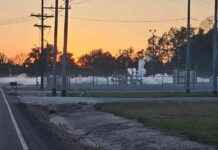Pennsylvania Faces Electric Demand Surge from Data Centers
Pennsylvania is bracing for a significant surge in electricity demand as data centers ramp up operations, driving up power needs across the state. According to projections from the grid operator PJM, three electric-transmission zones in Pennsylvania are set to experience substantial increases in power demand in the coming years, fueled by both existing and new data centers. This rise in energy consumption raises concerns about the impact on decarbonization efforts and the ability of the grid to meet the growing needs of consumers.
Power Demand Projections
PPL, serving regions including Harrisburg and Scranton, is projected to witness a staggering 60 percent increase in summer peak load demand by 2030, soaring to approximately 12,000 megawatts from the current 7,300 MW in 2025. Similarly, the Allegheny Power Systems region, supplied by FirstEnergy utilities, is expected to see load rise to nearly 10,000 MW by 2030 from the current 8,700 MW. Additionally, ATSI, FirstEnergy’s transmission utility serving parts of western Pennsylvania and Ohio, is forecasted to see its peak load demand climb to over 14,400 MW by 2030 from around 12,800 MW at present. The surge in demand across these regions is largely attributed to the increased energy needs of data centers.
Across the broader PJM area spanning 13 states, the uptick in data centers, manufacturing activities, and the electrification of buildings and vehicles are key drivers of the load forecast. By 2030, the summer peak load forecast is anticipated to be 9.5 percent higher than the previous year’s projection, with a further acceleration to 16.9 percent by 2035. Aftab Khan, PJM’s executive vice president for operations, planning, and security, highlighted the substantial growth in energy demand driven by the rapid expansion of data centers in recent years.
Environmental Concerns and Renewable Energy Solutions
The proliferation of data centers poses environmental challenges, with concerns that the heightened electricity demand will predominantly be met by fossil fuel sources, particularly natural gas. Environmental advocates like Ellie Kerns from the PennEnvironment Research & Policy Center caution against the potential setback to climate goals and advocate for the use of renewable energy sources to power data centers. A recent report titled “Big Data Centers, Big Problems” emphasizes the need for energy-efficient operations and minimal impact on the grid to mitigate environmental consequences.
In Pennsylvania, the growing demand for data centers presents a significant challenge for power providers like PPL, which anticipates the need for an additional 5,000 MW by 2030 to cater to data center growth—a figure five times higher than the total consumption in New Hampshire. Kimberly Barrow, vice chair of Pennsylvania’s Public Utility Commission, highlighted the escalating power demand during a presentation to the Citizens Advisory Council of the state’s Department of Environmental Protection, underscoring the need for sustainable energy solutions.
While the surge in electricity demand from data centers poses challenges, it also presents an opportunity to drive interest in zero-emissions sources like nuclear power. Jackson Morris, director of state power-sector policy, climate, and energy at the Natural Resources Defense Council, pointed to Microsoft’s partnership with Constellation Energy to power a new data center using nuclear energy. Morris stressed the importance of clean, affordable, and reliable energy solutions to meet the escalating demand without compromising environmental goals.
As data centers continue to expand, predictions of substantial electricity demand growth may need reassessment. Sean O’Leary, a senior analyst at the Ohio River Valley Institute, argues that forecasters like PJM may have overestimated the energy requirements of data centers. The development of energy-efficient technologies and platforms offers potential solutions to mitigate rising electricity demand and reduce energy consumption, creating new business opportunities in the process.
In conclusion, the surge in electricity demand driven by data centers in Pennsylvania underscores the complex interplay between energy consumption, environmental sustainability, and technological advancements. As stakeholders navigate the challenges posed by escalating power needs, the focus remains on finding innovative solutions that balance energy efficiency, affordability, and reliability to meet the demands of a rapidly evolving energy landscape.














